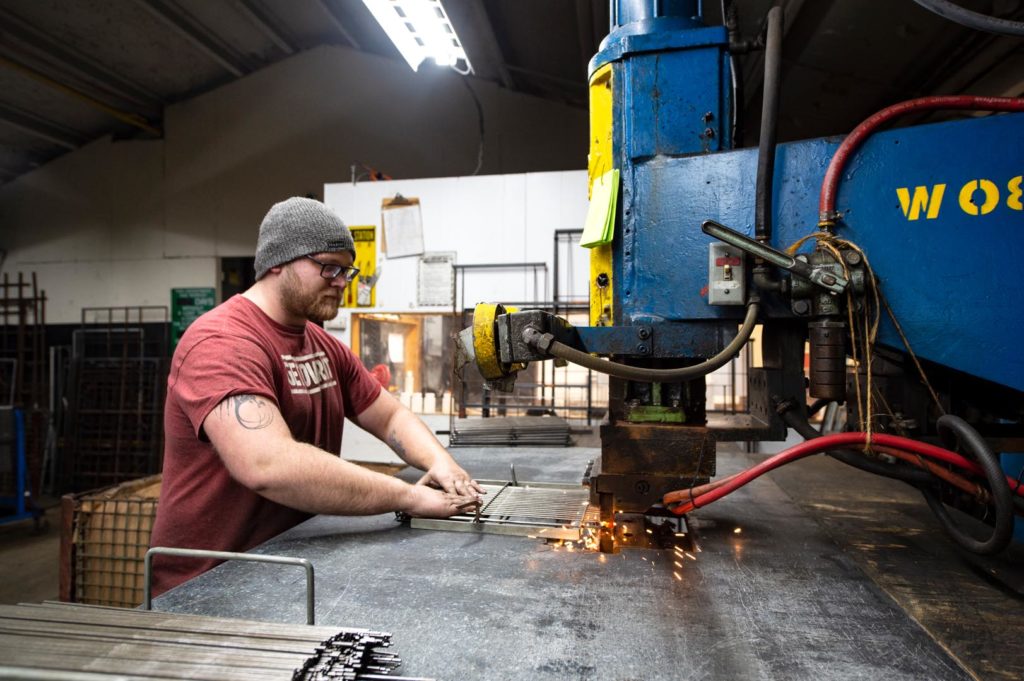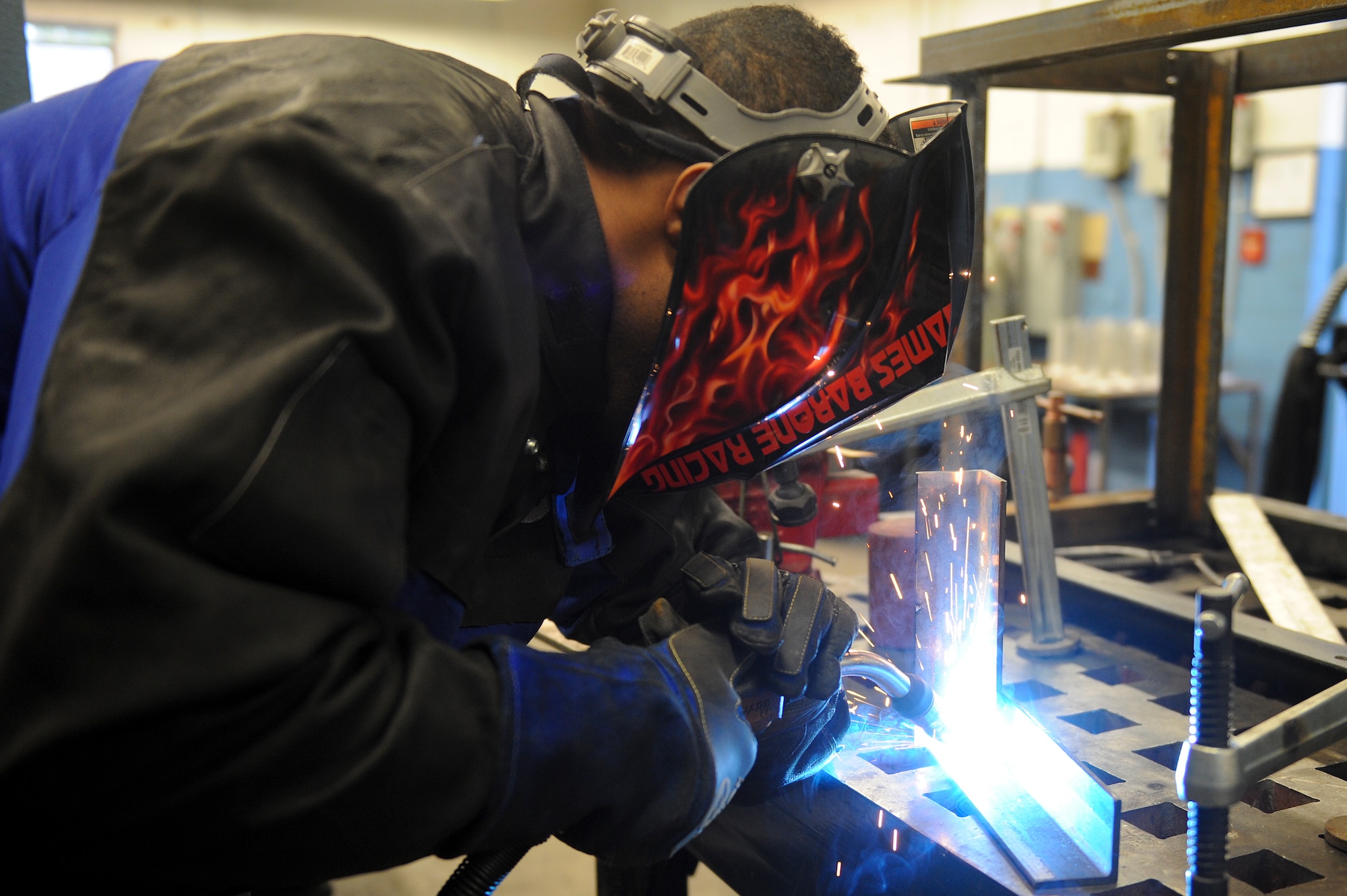Usual Welding Fixing Issues and Exactly How to Address Them Properly
Welding fixings commonly come across a series of problems that can endanger the stability of the end product. Common issues consist of poor penetration, porosity, and imbalance, to name a few. Each issue offers one-of-a-kind obstacles that require details methods for resolution. Comprehending these issues is essential for welders aiming to enhance their abilities and outcomes. This discussion will check out these usual welding repair service issues and effective approaches to resolve them.
Insufficient Penetration
Poor penetration happens when the weld metal fails to fully fuse with the base material, resulting in weak joints and possible structural failures. This issue commonly stems from not enough warmth input, incorrect electrode angle, or inappropriate welding rate. Welders might run into insufficient infiltration due to a mistake of the necessary criteria for a particular material density or kind. Furthermore, contamination on the base product's surface area can prevent efficient bonding, worsening the trouble. To resolve insufficient penetration, welders must assure appropriate setups on their equipment and preserve a clean job surface area. Routine assessment of welds is suggested to identify any type of shortages early, permitting prompt adjustments and the avoidance of jeopardized architectural honesty in welded settings up.
Porosity
Porosity is a common problem in bonded joints that materializes as tiny gas bubbles trapped within the weld metal. This problem can endanger the integrity of the weld, bring about lowered toughness and possible failing under tension. Belgrade. Porosity typically arises from contamination, dampness, or improper welding techniques, which allow gases to run away right into the molten weld swimming pool. To deal with porosity, welders ought to guarantee correct surface area preparation, maintain a tidy workplace, and use appropriate welding criteria. In addition, picking the ideal filler product and shielding gas can mitigate gas entrapment. Routine assessment and screening of welds can aid determine porosity early, assuring timely corrective activities are taken, thereby preserving the high quality and dependability of the welded framework
Imbalance
Imbalance in welding can emerge from different factors, consisting of inappropriate setup and thermal expansion. Comprehending the source is essential for effective resolution. Several correction strategies are offered to realign parts and assure structural stability.
Root causes of Imbalance
Welding misalignment usually originates from a range of underlying problems that can endanger structural integrity. One main reason is improper fit-up of elements before welding, which can cause gaps and unequal surfaces. Variants in thermal growth throughout the welding process can also cause distortion, specifically if the materials being signed up with have different coefficients of expansion. Furthermore, poor clamping and fixturing may fail to hold elements securely in location, causing activity during welding. Inadequately maintained devices, including welding makers and devices, might present disparities in the weld grain, further adding to misalignment. Operator error, stemming from insufficient training or experience, can additionally play a considerable function in developing misaligned welds.

Modification Strategies Readily Available
Addressing misalignment efficiently calls for a mix of restorative techniques tailored to the specific issues handy. One common approach is making use of jigs or fixtures to hold parts in the appropriate position throughout welding, making sure constant positioning. Additionally, preheating the materials can help reduce distortion and improve fit-up. For significant imbalance, mechanical adjustment methods, such as utilizing hydraulic jacks or clamps, can be utilized to deal with the position before welding. Post-weld warm treatment may additionally be required to alleviate stress and anxieties brought on by imbalance. Cautious evaluation and adjustment throughout the setup phase can prevent misalignment problems from coming to be substantial issues, advertising a smoother welding procedure and improving total architectural stability.
Distortion
Distortion is a common challenge in welding that can develop from various factors, consisting of unequal cooling and heating. Recognizing the root causes of distortion is essential for executing effective avoidance techniques. Resolving this concern not just enhances architectural stability however likewise enhances the overall high quality of the weld.
Sources of Distortion
When based on the intense heat of welding, products frequently go through changes that can result in distortion. This phenomenon largely arises from thermal expansion and contraction during the welding process. As the weld location warms up, the material broadens; upon cooling, it gets, which can develop inner stress and anxieties. In enhancement, unequal heating throughout a workpiece can aggravate these tensions, causing bending or bending. The kind of material also plays a considerable function; metals with differing thermal conductivity and coefficients of expansion might respond in different ways, resulting in unforeseeable distortions. Furthermore, poor joint layout and insufficient fixturing can add to misalignment during welding, raising the possibility of distortion. Understanding these reasons is important for efficient welding fixing and avoidance strategies.
Avoidance Techniques
Effective avoidance strategies for distortion throughout welding focus on regulating warmth input and ensuring appropriate joint layout. Preserving a constant warmth input helps to minimize thermal development and contraction, which can cause distortion. Using strategies such as preheating the work surface can likewise reduce the temperature gradient, promoting uniform home heating. Additionally, choosing ideal joint layouts, such as T-joints or lap joints, can boost security and lower anxiety concentrations. Implementing appropriate fixturing to protect the Continue work surfaces in place better aids in maintaining positioning throughout the welding process. Ultimately, staggered welding series can distribute warm a lot more uniformly, preventing local distortion. By applying these methods, welders can considerably lower the likelihood of distortion and boost the total top quality of their welds.
Fracturing
Breaking is an usual concern come across in welding repair work, commonly arising from different elements such as inappropriate air conditioning rates, material selection, or insufficient joint prep work. The incident of splits can substantially jeopardize the honesty of the weld, resulting in possible failures throughout procedure. To address this issue, welders need to initially analyze the source, making sure that materials work and properly chosen for the particular application. In addition, regulating the air conditioning rate during the welding procedure is crucial; fast cooling can generate anxiety and lead to breaking. Correct joint design and preparation additionally contribute to decreasing the danger. Carrying out these approaches can enhance weld top quality and longevity, inevitably lowering the possibility of splitting in finished weldments.

Insufficient Blend
A substantial issue in welding repairs is incomplete blend, which happens when the weld steel does not appropriately bond with the base material or previous weld passes - Montana Mobile Welding and Repair Belgrade Fabrication. This problem can cause weak points in the joint, potentially jeopardizing the honesty of the bonded structure. Aspects adding to insufficient blend include inadequate warmth input, improper welding technique, and contamination of the surface areas being signed up with. To resolve this problem successfully, welders should assure correct pre-weld cleaning and surface area preparation, along with change their welding specifications to accomplish ample penetration and blend. Routine inspection throughout the welding process can likewise help identify incomplete blend early, permitting prompt rehabilitative procedures to Continue improve the overall high quality of the weld
Overheating
While welding repairs can improve structural honesty, overheating presents a substantial challenge that can cause material deterioration. Extreme warm throughout welding can alter the mechanical properties of metals, causing reduced toughness, boosted brittleness, and warping. This sensation is specifically crucial in high-stress applications where architectural reliability is vital. Determining getting too hot can include visual evaluations for staining or distortion, as well as keeping an eye on temperature level during the welding procedure. To alleviate the threats connected with overheating, welders must utilize suitable strategies, such as managing warm input, adjusting traveling rate, and making use of suitable blog filler materials. Furthermore, implementing pre- and post-weld heat treatments can assist restore material homes and boost the overall quality of the repair, guaranteeing long-term efficiency and safety and security.
Regularly Asked Concerns
What Are the Usual Indicators of a Welding Flaw?

How Can I Test My Welds for High quality?
To test welds for high quality, one can utilize visual assessments, ultrasonic testing, and radiographic techniques. Each method guarantees structural integrity, identifies defects, and confirms adherence to specified standards, eventually boosting the reliability of the welded joints.
What Safety Preventative Measures Should I Take While Welding?
When welding, one should prioritize security by putting on suitable individual safety equipment, making certain appropriate air flow, securing flammable products away, maintaining a tidy workspace, and recognizing surroundings to avoid crashes and injuries.
Can I Fix a Weld Without Renovating the Entire Joint?
Fixing a weld without redoing the whole joint is feasible, depending on the damage (Belgrade). Strategies such as grinding, including filler product, or making use of a welding procedure can properly resolve details problems while preserving the surrounding structure
What Devices Are Necessary for Reliable Welding Repairs?
Necessary devices for efficient welding repair services consist of a welding equipment, wire brush, grinder, safety equipment, clamps, and filler products. Each tool plays an essential function in guaranteeing high quality and safety throughout the fixing procedure. Porosity normally develops from contamination, dampness, or inappropriate welding methods, which permit gases to escape into the molten weld pool. Inadequately conserved tools, including welding makers and devices, might present variances in the weld grain, further adding to imbalance. When subjected to the intense warmth of welding, products typically undergo changes that can lead to distortion. Splitting is a common concern run into in welding repair work, often resulting from numerous variables such as improper air conditioning rates, material option, or insufficient joint preparation. A significant concern in welding repair work is incomplete combination, which happens when the weld steel does not adequately bond with the base material or previous weld passes.